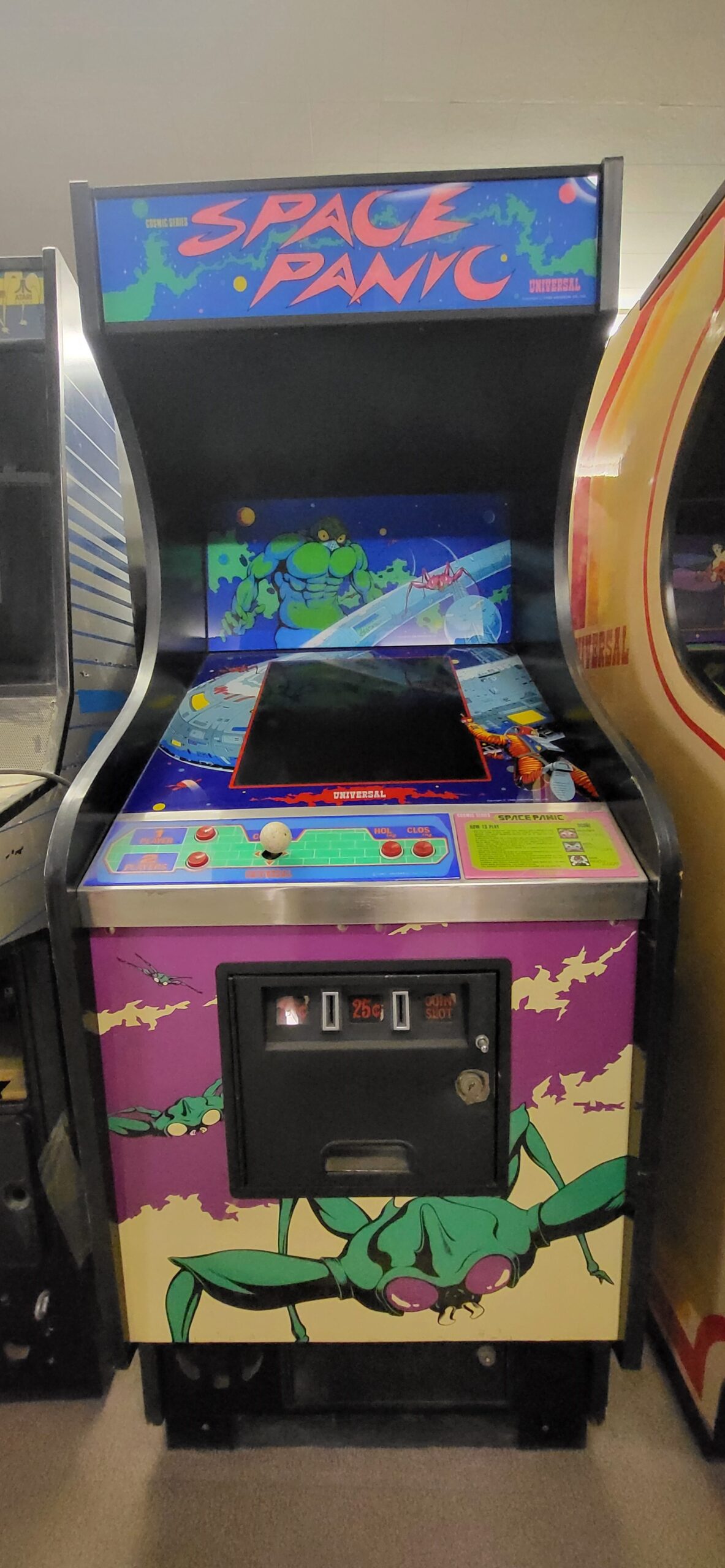
Space Panic
Arcade / Universal 1980
Space Panic is a classic arcade game developed by Universal, released in 1980. Regarded as one of the earliest examples of a platform game, it features a unique gameplay mechanic where players control an astronaut tasked with digging holes to trap and eliminate alien creatures. The game is set in a multi-layered structure with ladders connecting the platforms. Players must strategically dig and fill holes to defeat the aliens while avoiding capture.
Space Panic was developed by Universal, a Japanese video game company known for its innovative contributions to the arcade scene. Released in November 1980, it was designed during a time when the video game industry was rapidly evolving, pushing the boundaries of game mechanics and visual storytelling. The game’s unique blend of strategy and action set it apart from other titles of the time, and it is often credited as a precursor to more advanced platform games like Donkey Kong.
Upon its release, Space Panic received a mixed reception. Critics and players praised its innovative gameplay and the challenge it presented. However, its steep difficulty curve and less intuitive controls were points of contention. Over time, Space Panic gained a cult following and is now appreciated for its historical significance in the evolution of video game design.
Space Panic was ported to several home platforms, including the ColecoVision in 1983. The ColecoVision version retained the core mechanics of the arcade original but introduced slight variations to adapt to home console play. Related games include Apple Panic, a clone released for the Apple II and other home computers, which expanded on the digging mechanic introduced by Space Panic. Space Panic’s influence can be seen in later platformers that incorporate vertical navigation and strategic enemy trapping.
Original Space Panic arcade cabinets are considered rare collectors’ items. While exact production numbers are unclear, it is estimated that a few thousand units were produced. The value of a well-preserved Space Panic arcade cabinet can vary significantly, with prices ranging from $1,000 to $3,000, depending on the condition and completeness of the machine. Fully restored units, particularly those with original artwork and components, can fetch higher prices among dedicated collectors.
The hardware of Space Panic includes the following key components:
Central Processing Unit (CPU): Zilog Z80
Video Display: CRT monitor, capable of displaying multi-color sprites and backgrounds
Audio: Mono sound system with basic sound effects
Controls: Joystick and single button for digging
Cabinet: Upright wooden frame with marquee, control panel, and coin slots
For potential repairs, relevant parts include:
Zilog Z80 CPU
CRT monitor components (flyback transformer, yoke, CRT tube)
Power supply unit
Joystick and button assembly
Printed circuit boards (PCBs) with game ROMs
Speaker and audio amplifier components
Marquee and cabinet artwork for restoration
Maintaining and repairing an original Space Panic machine requires sourcing vintage parts, many of which can be found through specialty arcade part suppliers or from other non-functioning units. Collectors often join communities dedicated to arcade restoration to share resources and expertise in preserving these historical games.


